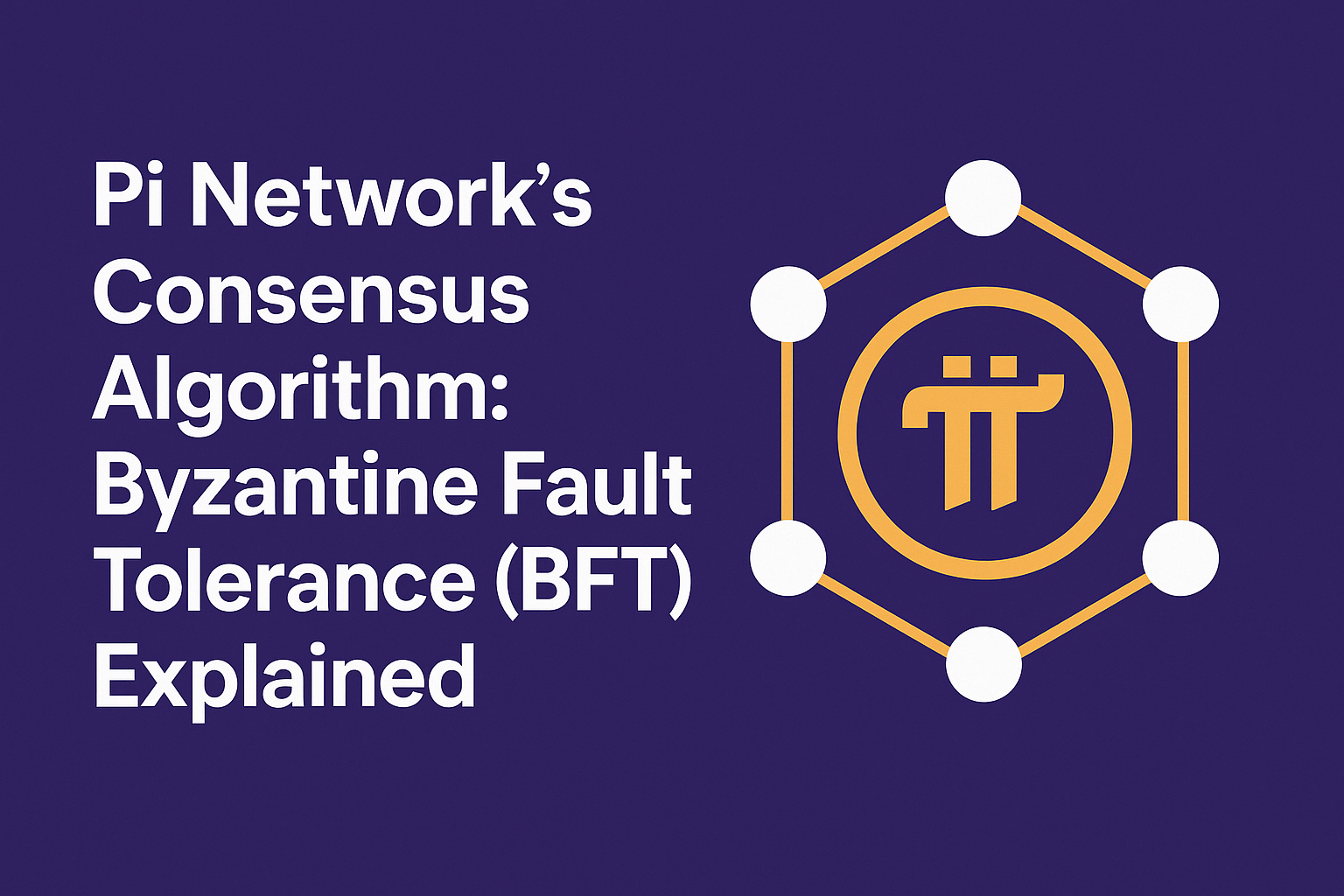Pi Network vs Bitcoin: Key Differences
Pi Network and Bitcoin are two cryptocurrencies that have garnered significant attention in the crypto world. However, despite both being part of the larger cryptocurrency ecosystem, they differ in several critical aspects. Pi Network, while newer and still in development, offers unique features that set it apart from Bitcoin. This article will explore the key differences between Pi Network and Bitcoin, comparing their consensus mechanisms, mining methods, accessibility, security, and scalability.
1. Consensus Mechanism
Bitcoin’s Consensus Mechanism: Proof of Work (PoW)
Bitcoin uses a consensus mechanism called Proof of Work (PoW), where miners compete to solve complex mathematical problems to add new blocks to the blockchain. The process requires significant computational power, leading to high energy consumption. Bitcoin miners use powerful hardware (ASICs or GPUs) to perform the necessary computations, which results in competition for block rewards. This method ensures the security and decentralization of the Bitcoin network, as miners need to expend real-world resources to validate transactions.
- Energy-intensive: PoW requires a large amount of electricity to power mining operations.
- Decentralization: PoW helps secure Bitcoin through a decentralized mining network, though mining power has increasingly concentrated in mining pools.
Pi Network’s Consensus Mechanism: Proof of Consensus (PoC)
Pi Network, on the other hand, uses a Proof of Consensus (PoC) mechanism, which is designed to work with mobile devices and ensure low energy consumption. Unlike Bitcoin’s PoW, Pi’s consensus model doesn’t rely on heavy computational power but rather on the concept of Trust Circles. Pi Network participants engage with others in their Trust Circle to validate transactions and reach consensus.
- Low energy consumption: PoC is designed to be lightweight and mobile-friendly, allowing users to mine with their smartphones without excessive battery or processing power.
- Mobile accessibility: The consensus is built around mobile mining, meaning anyone with a smartphone can participate in the network and contribute to consensus.
2. Mining Methods
Bitcoin Mining: Proof of Work (PoW)
Bitcoin mining is based on the Proof of Work model, which requires miners to use specialized hardware to solve cryptographic puzzles and compete for rewards. Miners expend significant energy resources in the process, which has led to criticism regarding Bitcoin’s environmental impact.
- Hardware-intensive: Bitcoin mining requires ASICs (Application-Specific Integrated Circuits) or GPUs (Graphics Processing Units), which are costly and require technical knowledge.
- Energy consumption: PoW consumes large amounts of electricity, which has made Bitcoin mining increasingly centralized, as only those with access to cheap energy and expensive hardware can afford to mine.
Pi Network Mining: Proof of Consensus (PoC)
Pi Network’s mining process is vastly different from Bitcoin’s. Pi uses the Proof of Consensus mechanism, which allows users to mine Pi coins simply by using their smartphones. There is no need for expensive mining equipment or high energy consumption.
- Low-cost mining: Mining Pi coins is accessible to anyone with a smartphone, and no special hardware is required.
- Energy-efficient: Pi Network is designed to minimize energy consumption, making it far more environmentally friendly compared to Bitcoin.
3. Accessibility and Inclusivity
Bitcoin Accessibility
Bitcoin is relatively accessible, but the high cost of mining hardware and the energy requirements make it difficult for the average person to mine Bitcoin profitably. While anyone can purchase Bitcoin through exchanges, mining remains out of reach for many due to the expensive upfront investment in hardware.
- Requires expensive hardware: To mine Bitcoin, users need specialized hardware that can cost thousands of dollars.
- Geographic restrictions: The high energy consumption of Bitcoin mining means that miners typically operate in regions where electricity is cheap, limiting the accessibility of Bitcoin mining in certain areas.
Pi Network Accessibility
Pi Network is highly accessible, as anyone with a smartphone can participate in the network by simply downloading the Pi Network app and starting the mining process. This inclusivity has made Pi Network attractive to individuals in developing countries or those who do not have access to expensive hardware.
- Mobile-friendly: Pi allows users to mine using their smartphones, making it more inclusive and accessible.
- Low barrier to entry: Unlike Bitcoin, where mining requires expensive hardware and electricity, Pi Network enables almost anyone to participate in mining without any significant investment.
4. Security and Decentralization
Bitcoin Security
Bitcoin’s security is ensured through its decentralized network of miners. Since Bitcoin’s PoW mechanism requires miners to expend real-world resources (computational power) to validate transactions, it is difficult for any malicious actor to take control of the network. The more computational power in the network, the more secure Bitcoin becomes.
- Highly secure: The decentralized nature of Bitcoin’s PoW ensures that the network is secure and resistant to attacks.
- Potential centralization: While Bitcoin is designed to be decentralized, the concentration of mining power in a few large mining pools has led to concerns about centralization.
Pi Network Security
Pi Network’s security is built on its Proof of Consensus model, which relies on Trust Circles and mobile mining. While it is still in its development phase and not fully decentralized yet, Pi Network’s security model aims to be user-driven, with users validating transactions and securing the network through their engagement in the ecosystem.
- Less computationally intensive: Pi’s security relies on Trust Circles, where users validate transactions by participating in a decentralized way through their smartphones.
- Ongoing decentralization: Pi Network is still in the process of achieving full decentralization, which means that its security is not as robust as Bitcoin’s PoW network yet.
5. Scalability
Bitcoin Scalability
Bitcoin’s scalability has been a longstanding challenge. The Bitcoin network can handle a limited number of transactions per second (TPS), typically around 7 TPS, due to the resource-intensive nature of PoW. While solutions like the Lightning Network are being developed to improve Bitcoin’s scalability, its inherent limitations make it less efficient in terms of transaction throughput.
- Limited scalability: Bitcoin’s PoW system restricts the number of transactions it can process, leading to delays and higher transaction fees during peak periods.
- Layer-2 solutions: While Bitcoin is scalable through Layer-2 solutions, such as the Lightning Network, the base layer’s scalability remains constrained.
Pi Network Scalability
Pi Network is designed to be highly scalable from the outset. Since Pi’s consensus mechanism relies on mobile participation, it can scale efficiently without the same computational overhead as Bitcoin. As the network grows, the number of users and Trust Circles will naturally increase, enabling Pi Network to handle a much larger transaction volume.
- Scalable by design: Pi’s lightweight PoC mechanism and mobile-based mining make it highly scalable.
- Efficient transactions: Pi Network can handle more transactions per second without requiring significant computational power, making it more suitable for mass adoption.
6. Environmental Impact
Bitcoin’s Environmental Impact
Bitcoin’s energy consumption has been a major point of criticism. The process of mining Bitcoin requires vast amounts of electricity, contributing to a significant carbon footprint. As a result, Bitcoin mining is often associated with environmental concerns, especially in regions where energy is produced through fossil fuels.
- High energy consumption: Bitcoin mining consumes large amounts of electricity, contributing to environmental concerns.
- Carbon footprint: The environmental impact of Bitcoin is a key issue for many environmentalists.
Pi Network’s Environmental Impact
Pi Network, in contrast, is designed to have a minimal environmental impact. By using a mobile mining approach and relying on low-energy consumption, Pi Network is much more energy-efficient than Bitcoin.
- Low energy use: Pi Network’s mobile-based mining method ensures minimal electricity usage.
- Environmentally friendly: Compared to Bitcoin, Pi’s environmental footprint is much smaller, making it a more sustainable option for users concerned about energy consumption.
Conclusion: Pi Network vs Bitcoin
Pi Network and Bitcoin are both innovative projects within the cryptocurrency ecosystem, but they differ significantly in terms of mining methods, consensus mechanisms, accessibility, scalability, and environmental impact. While Bitcoin is the established leader with a robust and secure Proof of Work mechanism, Pi Network offers an alternative that focuses on low-cost, mobile-based mining and scalability, aiming to make cryptocurrency more accessible to a broader audience.
Bitcoin remains the dominant cryptocurrency with a proven track record, but Pi Network’s unique approach could potentially redefine how cryptocurrencies are mined and adopted in the future. Only time will tell whether Pi Network can achieve its ambitious goals and become a serious competitor to Bitcoin.




